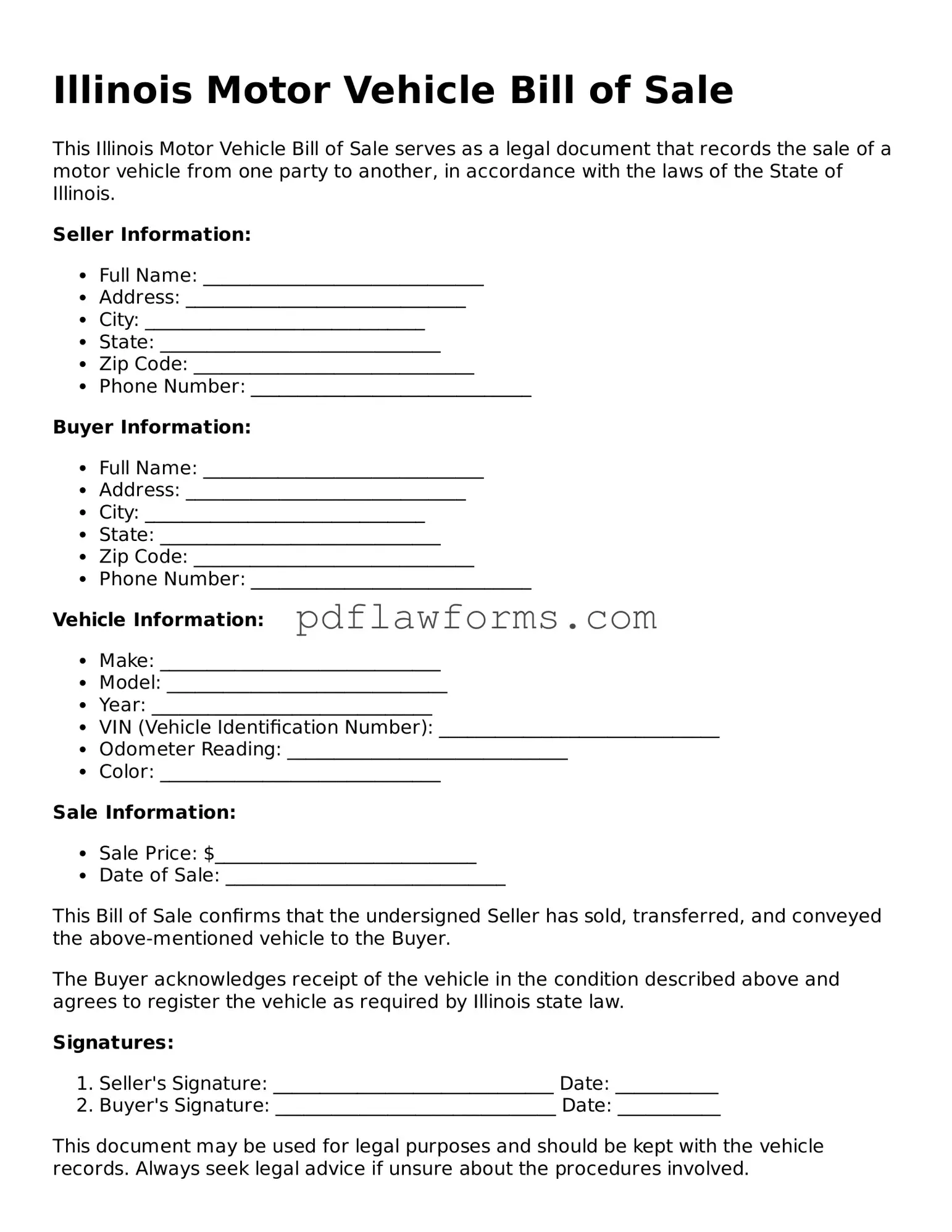Filling out the Illinois Motor Vehicle Bill of Sale form can seem straightforward, but many individuals make common mistakes that can lead to complications later. One frequent error is failing to include all necessary information. Buyers and sellers must provide accurate details such as the vehicle identification number (VIN), the make and model of the vehicle, and the sale price. Omitting any of this information can result in delays or issues with vehicle registration.
Another common mistake is not signing the document. Both the buyer and seller must sign the Bill of Sale for it to be valid. Without these signatures, the form may not be legally recognized, which can create problems during the transfer of ownership.
People often overlook the importance of the date of sale. This date is crucial as it establishes when the transaction took place. Failing to include the date can lead to confusion regarding ownership and may affect tax implications.
Additionally, some individuals neglect to provide accurate odometer readings. The odometer reading is essential for determining the vehicle's mileage at the time of sale. Incorrect readings can lead to disputes and potential legal issues, especially if the vehicle has a history of odometer tampering.
Another mistake involves not keeping a copy of the Bill of Sale. After completing the form, both parties should retain a copy for their records. This document serves as proof of the transaction and can be useful if any disputes arise in the future.
Some sellers may also forget to disclose important vehicle information, such as any existing liens or outstanding loans on the vehicle. Transparency is key in any transaction. Not informing the buyer about these issues can lead to mistrust and potential legal consequences.
Lastly, individuals sometimes fail to check for errors before submitting the form. Simple mistakes, such as typos or incorrect information, can have significant repercussions. It is always advisable to review the completed form carefully to ensure that all details are correct and complete.
